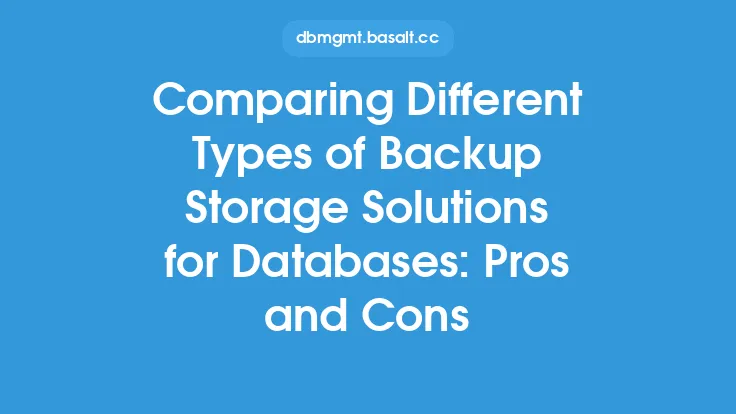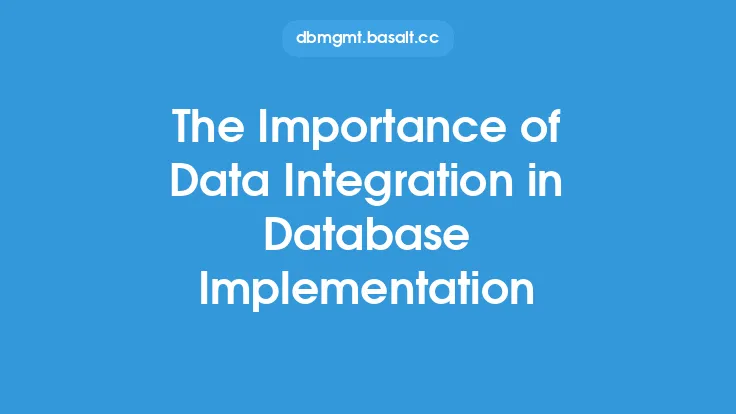Data redundancy in database systems refers to the duplication of data within a database, where the same piece of information is stored in multiple locations. This can be done intentionally, as a design choice, or unintentionally, due to poor database design or data entry errors. In this article, we will explore the pros and cons of data redundancy in database systems, highlighting the benefits and drawbacks of this approach.
Introduction to Data Redundancy
Data redundancy can be achieved through various methods, including data duplication, data replication, and data caching. Data duplication involves storing the same data in multiple tables or rows, while data replication involves maintaining multiple copies of the same data in different locations. Data caching, on the other hand, involves storing frequently accessed data in a faster, more accessible location. Each of these methods has its own advantages and disadvantages, which will be discussed in detail below.
Advantages of Data Redundancy
One of the primary advantages of data redundancy is improved data availability. By storing data in multiple locations, the risk of data loss or corruption is reduced, and data can be recovered more quickly in the event of a failure. Data redundancy also improves data accessibility, as data can be retrieved from multiple locations, reducing the load on any one location. Additionally, data redundancy can improve system performance, as data can be retrieved from a location that is closer to the user, reducing latency and improving response times.
Disadvantages of Data Redundancy
Despite the advantages of data redundancy, there are also several disadvantages to consider. One of the primary disadvantages is data inconsistency, which can occur when data is updated in one location but not in others. This can lead to inconsistencies and errors, which can be difficult to resolve. Data redundancy also increases storage requirements, as multiple copies of the same data must be stored. This can lead to increased costs and reduced efficiency. Furthermore, data redundancy can make data management more complex, as multiple locations must be updated and maintained.
Technical Considerations
From a technical perspective, data redundancy can be achieved through various database design techniques, including denormalization, data warehousing, and materialized views. Denormalization involves intentionally duplicating data to improve performance, while data warehousing involves storing data in a separate location for analysis and reporting. Materialized views, on the other hand, involve storing the results of a query in a physical table, reducing the need for redundant calculations. Each of these techniques has its own advantages and disadvantages, and the choice of technique will depend on the specific requirements of the database.
Data Redundancy and Data Normalization
Data redundancy is often seen as the opposite of data normalization, which involves eliminating redundant data to improve data integrity and reduce storage requirements. However, data redundancy and data normalization are not mutually exclusive, and a balanced approach can be taken to achieve the benefits of both. By normalizing data to eliminate redundant data, and then intentionally duplicating data to improve performance and availability, a database can be designed to meet the needs of both data integrity and system performance.
Conclusion
In conclusion, data redundancy in database systems is a complex issue, with both advantages and disadvantages. While data redundancy can improve data availability, accessibility, and system performance, it also increases storage requirements, can lead to data inconsistency, and makes data management more complex. By understanding the pros and cons of data redundancy, database designers can make informed decisions about when to use data redundancy, and how to implement it effectively. By taking a balanced approach to data redundancy and data normalization, a database can be designed to meet the needs of both data integrity and system performance, ensuring that data is available, accessible, and consistent.





